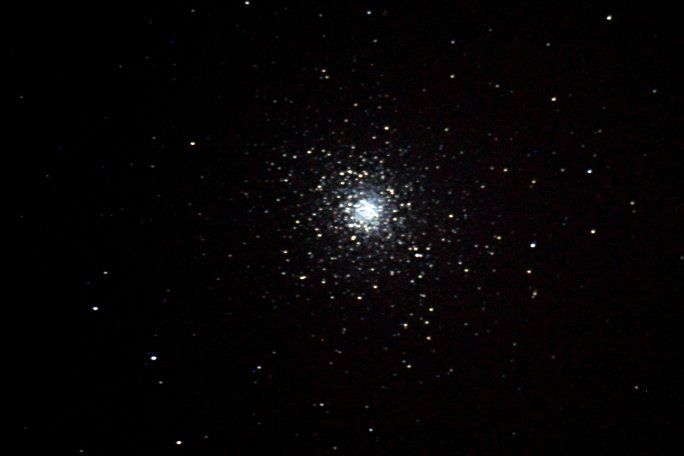DSO of the Month
Messier 15
AKA: Great Pegasus Cluster; NGC 7078.
Position: 21 hr 38.0 min 12 deg 10 min 1 sec
Due south at 22:50 (BST) on 15 September
Image of M15 by HAS Member Martin Gill. Used with permission.
Living in a light polluted area such as Havering creates problems in observing certain objects with the naked eye. Most galaxies are not easy to see if they can be seen at all. There are a few exceptions and they will be covered in due course. In theory one can observe star clusters, but their appearance is often disappointing compared with what can be seen in dark sky areas. Single stars and double stars are not a problem and have their own sections here. This leaves planetary nebulae—which are often small and faint—and globular clusters. It could be argued that even globular clusters are not seen to their best advantage in light polluted areas, but we are where we are. So having covered two planetary nebulae, we turn back to a globular cluster, the Great Pegasus Cluster or Messier 15. It is fairly large with a diameter of about 18 arc minutes or half the size of the full moon and at magnitude 6.2 should be visible to the naked eye in very dark skies. In Havering it can be easily seen with binoculars or a small telescope, but you will need a larger telescope (probably 150 mm upwards) to resolve some of the stars. Like most globular clusters, M15 is very old, at 12 billion years old it is almost as old as the universe itself, and it is far away at 33,000 light years. It is also very dense, having suffered a “core collapse”. It also contains lots of stuff. In addition to containing 100,000 stars, it also has over a hundred variable stars, eight pulsars (including a binary neutron star system) and two X-ray sources. The first planetary nebula to be found in a globular cluster was discovered in M15 in 1928, but Pease 1 is too faint to be observed in a small telescope. M15 was discovered as a nebulous star by the French-Italian astronomer Jean-Dominique Maraldi in 1746 (along with M2) when he was looking for a comet. M15 was an early addition to Charles Messier’s catalogue in 1764. To find M15, drop down from Deneb until you are more or less level with Altair: the cluster forms a more or less right angle triangle with these two bright stars. Or you can trace a line from Biham (Theta Pegasi) to Enif (Epsilon Pegasi) and carry along this line for another four degrees. You can find a nice but faint elderly planetary nebula, NGC 7094 about a degree east of M15 (this means it is following, so you could turn off your tracking and it should soon float into your field of view), but at magnitude 13.3 you will need at least an eight inch telescope and an OIII filter. It should appear as a blue star-like disc or a blue ring if your telescope is large enough.
ARCHIVE
